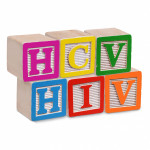People coinfected with HIV and hepatitis B virus (HBV) may have a high rate of significant liver fibrosis, based on an analysis of the liver health of a cohort of such individuals, Healio reports.
Publishing their findings in The American Journal of Gastroenterology, researchers analyzed liver disease parameters in a group of 114 people coinfected with HIV and HBV who were on combination antiretroviral treatment for both viruses. They looked at fibrosis severity as well as what is known as the Ishak Histologic Activity Index (HAI), which grades fibrosis on a scale of 0 (no fibrosis) to 6 (cirrhosis).
A total of 36.9 percent of the cohort had significant fibrosis, including 23.7 percent with advanced fibrosis and 5 percent with cirrhosis. Twenty-nine percent had steatosis higher than 5 percent, and 10 percent had non-alcoholic steatohepatitis (NASH).
AST liver enzyme levels and having a history of diabetes were each associated with HAI scores after the researchers adjusted the data for platelet count, CD4 count and detectable HIV and HBV viral load. Those with a history of diabetes had an average 2.1 higher points on the HAI scale compared with those with no such history. For each increase of 10 international units per liter in AST the participants scored on average 0.5 points higher on the HAI scale.
After adjusting the data for various factors, the researchers found that for each 10 IU/l increase in ALT participants had a 19 percent increased risk of advanced fibrosis. Otherwise, each 20,000 cubic milliliter increase in platelet count was associated with a 19 percent lower risk of advanced fibrosis.
To read the Healio article, click here.
To read the study abstract, click here.







Comments
Comments